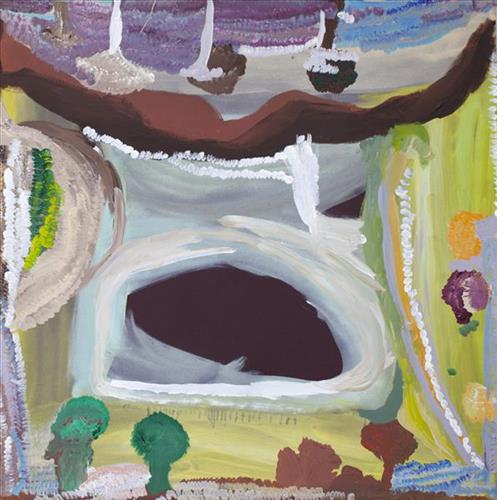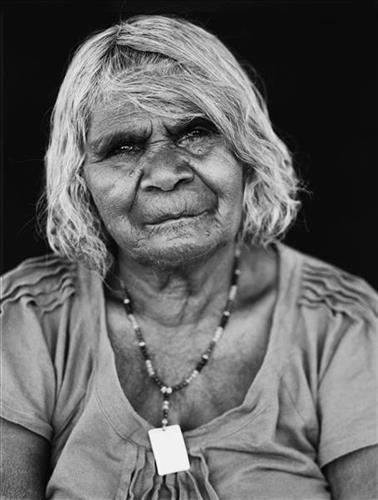111581945290
Kintyre
“We are Warnman ladies, painting Kintyre and Karlamilyi (Rudall River region). We can share this Country. [Kintyre] belongs to Pulikati [Hill], ngurra (home Country, camp) for my sister and all the Warnman families. My fathers and brothers and husbands, my sister they was there, 200 peoples was there [in the] bushman day! Everybody finished now (passed away), just me and my sister and Daniel, nyirti (youngest) one.
[North west of Kintyre is] Yanytikuji, red hill over there. They working, doing the mining there now [at Yandicoogina Mine]. Next to Yanytikuji is a big claypan, Yalpalpa, main camp and a water. That’s a hunting place. Plenty of bush tucker round there; kanyjamarra (yam, bush carrot), like a carrot growing in the ground in the riverbed there. You pull it out, just like a carrot! Lunki (witchetty grub), and jatarrpa, that’s like a seed, you gotta clean him up and grind it to make a flour wheat, make a damper in the waru (fire). We gonna get that seed and show you fellas. Minyarra (bush onion) there, and ngaputa (sweet, patterned green melon), they all grow in the river banks.”
– Sisters Jatarr Lily Long and Wurta Amy French
Kintyre is a claypan located just north of the Karlamilyi region. Kintyre lies within sisters Wurta and Jatarr’s ngurra (home Country, camp), the area which they knew intimately and travelled extensively with their family in their youth. During the pujiman (traditional, desert dwelling) era, the site was a popular camping ground in the wantajarra (wet season), when the claypan filled with kapi (water). Today Kintyre is best known for its substantial uranium deposits, and the area has been developed for mining. Protest from traditional land owners in combination with a declining uranium market have resulted in the project being put on hold for the time being.
The area around Kintyre was created during the Jukurrpa (Dreaming) by the Wati Kujarra (Two Goanna Men). The Wati Kujarra existed as half men, half goanna. They were responsible for the creation of many land features in Martu Country and beyond as they travelled, hunted and burned Country together. Wati Kujarra is a ngurlu (sacred, taboo) men’s story, and for this reason much of the content is only shared with initiated men.
In their account, Wurta and Jatarr describe the collection of various types of bush tuckers in the region surrounding Kintyre. During the pujiman period, Martu would traverse very large distances annually in small family groups, moving seasonally from water source to water source, and hunting and gathering bush tucker as they went. Whilst desert life has moved away from mobile hunter-gatherer subsistence throughout the course of the twentieth century, bush tucker continues to be a significant component of the modern Martu diet.




